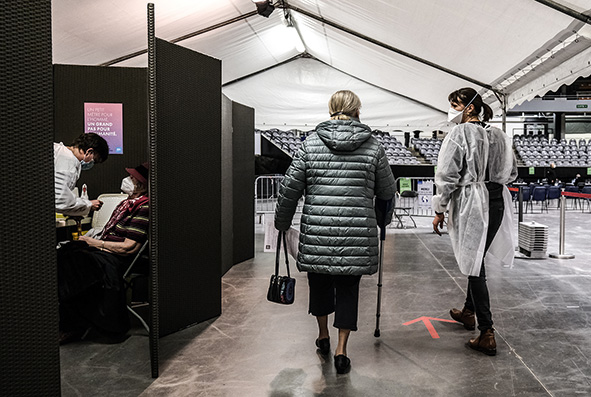The Lyon vaccination center at the sports hall in Gerland © Antoine Merlet
–
Contaminations have started to rise again in Lyon and in the Rhône for two weeks. But the increase remains measured, much less significant than in the other French departments and regions.
The circulation of the virus at time t in a territory is measured using the incidence rate. It is a key indicator. The incidence rate determines the number of positive cases over the last 7 days per 100,000 inhabitants. Over a rolling week. It is a very good way to measure the degree of circulation of the virus, at a given moment, in a territory.
In the Rhone departmentaccording to the latest stabilized figures as of Saturday March 19, the incidence rate is 585 (the data therefore takes into account the period between Sunday March 13 and Saturday March 19). This rate was 4 655 at the peak on Friday January 21 but from 355 March 6, at the bottom of the wave. Since March 6, slight rise therefore the Rhône.
The Auvergne-Rhône-Alpes region less affected
In the Auvergne-Rhône-Alpes region, this average incidence rate is 662. It is the weakest in France. In comparison, the incidence rate is currently 1319 in Brittany, 1058 in Hauts-de-France or 1293 in the Grand-Est.
During certain waves of covid-19, Auvergne-Rhône-Alpes was the region of France where the virus circulated the most. This is clearly no longer the case now. On the contrary. The Auvergne-Rhône-Alpes region is less affected by the epidemic recovery.
The point below in graph (for the Auvergne-Rhône-Alpes region, it is the red curve)
Source: Public Health France.
—
FOR FURTHER
Dr Sophie Trouillet-Assantresearcher at the Hospices Civils de Lyon (HCL) and at the International Center for Research in Infectiology (CIRI) in Lyon, was the guest of the daily newspaper of Lyon Capital on February 10, 2022. The researcher specializes in work on covid long.
–

